Departmental History
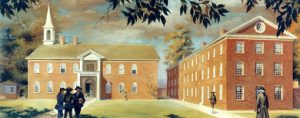
1740: Founding date for University (Trust for Charity School of Philadelphia established).
1751: The Academy opens, inspired by Benjamin Franklin’s vision for a new type of learning institution that would prepare students for lives of business and public service.
1769: A separate chair for chemistry is established in the Medical School and classes in chemistry are offered.
1795: James Woodhouse becomes the first Professor of Chemistry, no longer in the Medical School.
1892: Edgar Fahs Smith organizes the four-year bachelors program in Chemistry.
1893: Edgar Fahs Smith organizes the four-year bachelor’s program in chemical engineering in the Department of Chemistry and Chemical Engineering in the Towne Scientific School.
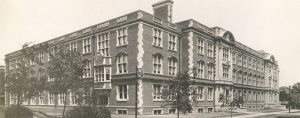 1906: The Towne Building (pictured right) is dedicated. At the time of its dedication, it is regarded as the finest engineering building in the nation.
1906: The Towne Building (pictured right) is dedicated. At the time of its dedication, it is regarded as the finest engineering building in the nation.
1930s: Inauguration of a graduate program in chemical engineering leading to a Ph.D.
1951: A separate School of Chemical Engineering is organized, chaired by Melvin Molstad.
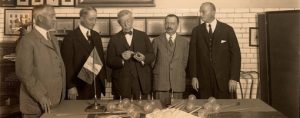 1954: The four departments of the Towne Scientific School became, with the Moore School of Electrical Engineering, the five Engineering Schools (School of Chemical Engineering, School of Civil Engineering, School of Mechanical Engineering, and the School of Metallurgical Engineering). In February, the University announced that in the fall semester, for the first time, women would be admitted to the undergraduate programs of the School of Engineering and the Wharton School.
1954: The four departments of the Towne Scientific School became, with the Moore School of Electrical Engineering, the five Engineering Schools (School of Chemical Engineering, School of Civil Engineering, School of Mechanical Engineering, and the School of Metallurgical Engineering). In February, the University announced that in the fall semester, for the first time, women would be admitted to the undergraduate programs of the School of Engineering and the Wharton School.
1962: Arthur Humphrey succeeds Melvin Molstad as chair. Humphrey develops a pioneering program in support of the fermentation industry that is largely responsible for the development of a biochemical and biomedical engineering group within the School of Chemical Engineering.
1963: The Department launches an annual canoe trip on the Delaware River, a tradition that lasts over 30 years.
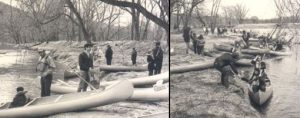 1972: The Faculties of the five Engineering Schools are reorganized into a single Faculty of Engineering and Applied Science.
1972: The Faculties of the five Engineering Schools are reorganized into a single Faculty of Engineering and Applied Science.
1973: The College of Engineering and Applied Science is formed with the Departments of Bioengineering, Chemical Engineering, Civil and Urban Engineering, Computer and Information Science, Electrical Engineering and Science, Mechanical Engineering and Applied Mechanics, Metallurgy and Materials Science, and Systems Engineering.
1975: Premier biochemical research programs headed by Arthur Humphrey and John Quinn are recognized by changing the department name to the Department of Chemical and Biochemical Engineering
1976: Douglas Lauffenburger joins the department and initiates research programs focused on cellular and biomolecular engineering.
1979: The College of Engineering and Applied Science is renamed the School of Engineering and Applied Science.
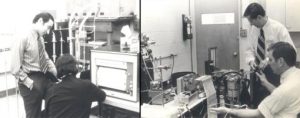 1980: The Department changes its name to the Department of Chemical Engineering. The prevailing view in the faculty is that this name better represents the Department’s research portfolio, which is focused in areas such as kinetics and catalysis, surface and colloid chemistry, and molecular thermodynamics, in addition to biochemical engineering.
1980: The Department changes its name to the Department of Chemical Engineering. The prevailing view in the faculty is that this name better represents the Department’s research portfolio, which is focused in areas such as kinetics and catalysis, surface and colloid chemistry, and molecular thermodynamics, in addition to biochemical engineering.
1996: The Institute for Medicine and Engineering is founded.
1997: A master’s degree in biotechnology is first offered (in conjunction with the School of Arts and Sciences) with significant leadership from Chemical Engineering faculty.
1997: The Roy & Diana Vagelos Laboratories of the Institute for Advanced Science and Technology are dedicated. The fifth floor houses chemical engineering research laboratories.
2003: As biomolecular engineering becomes increasingly prominent in its research portfolio, the Department changes its name to the Department of Chemical and Biomolecular Engineering.
2005: The Penn Center for Molecular Discovery is founded under the leadership of CBE Professor Scott Diamond.
